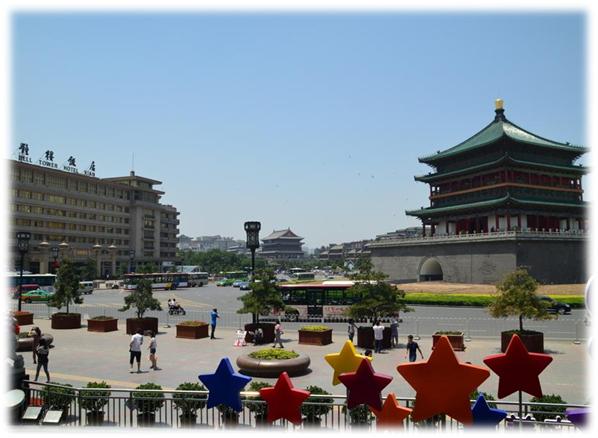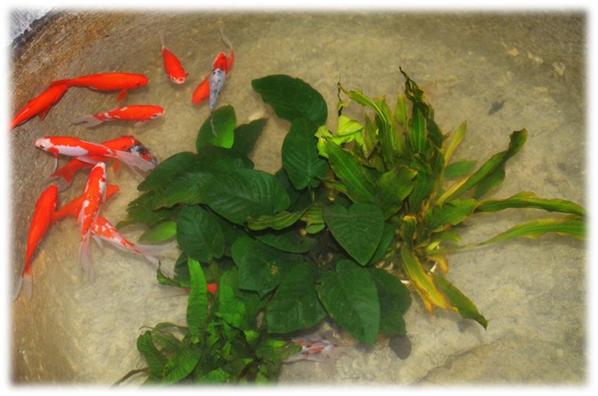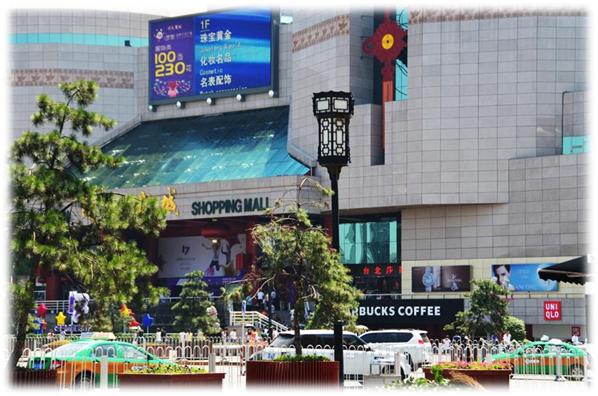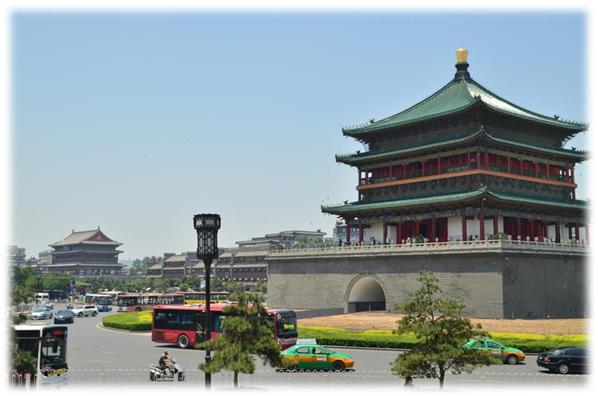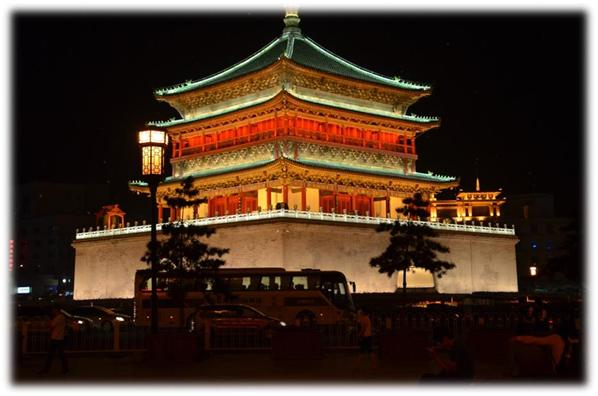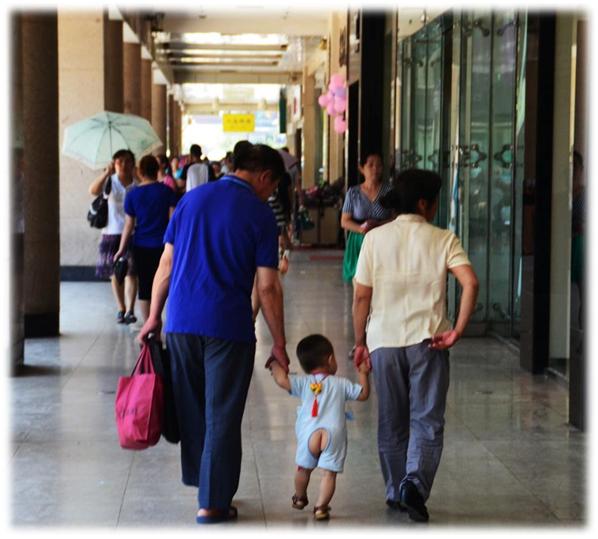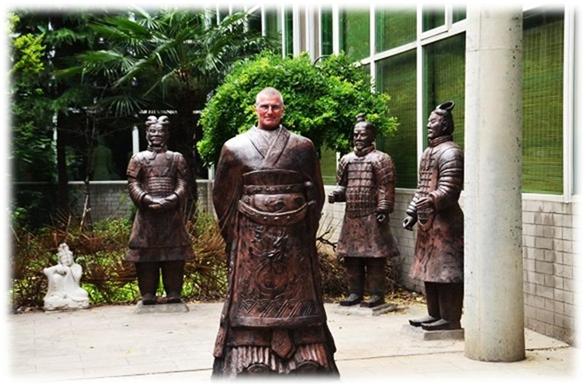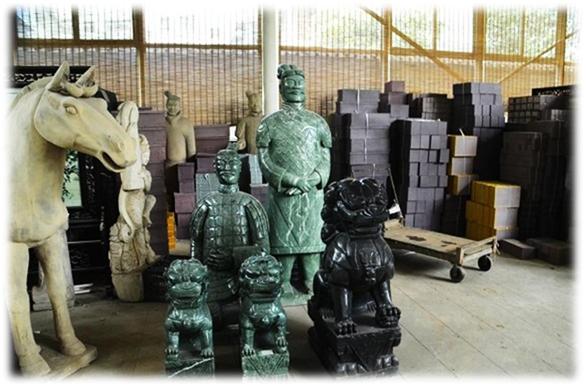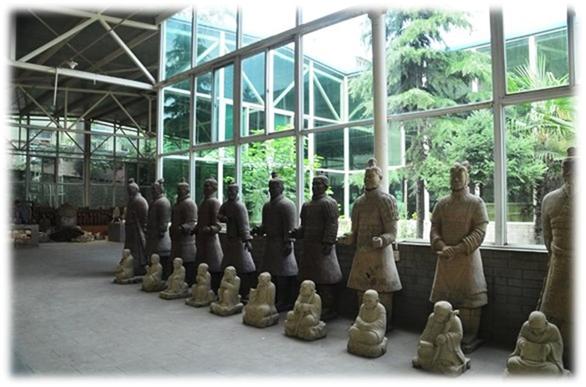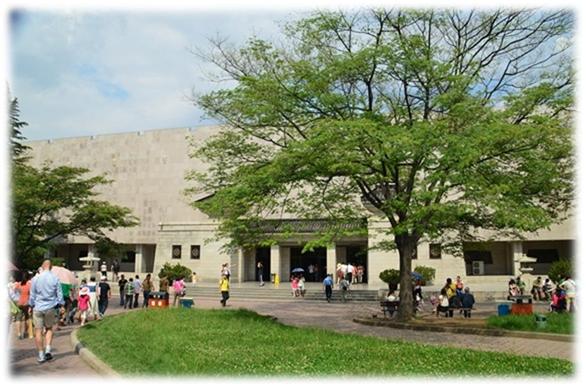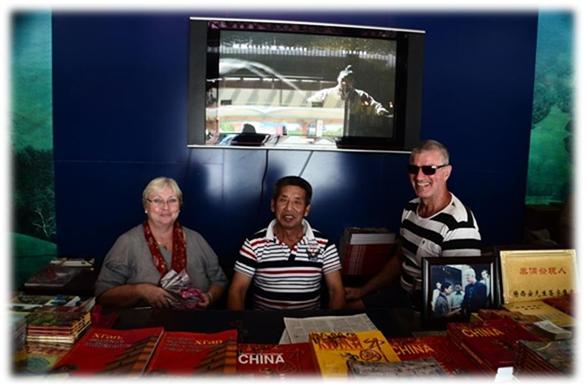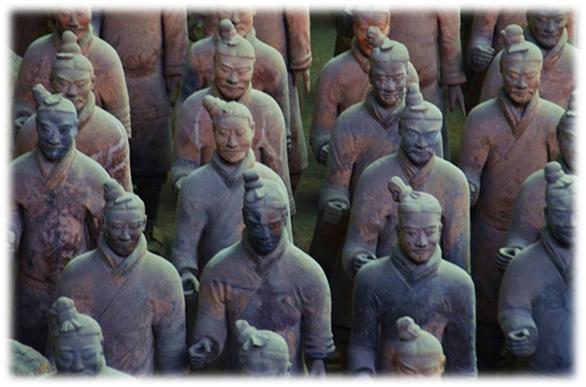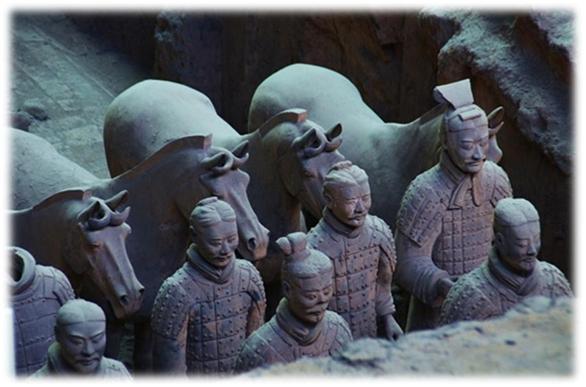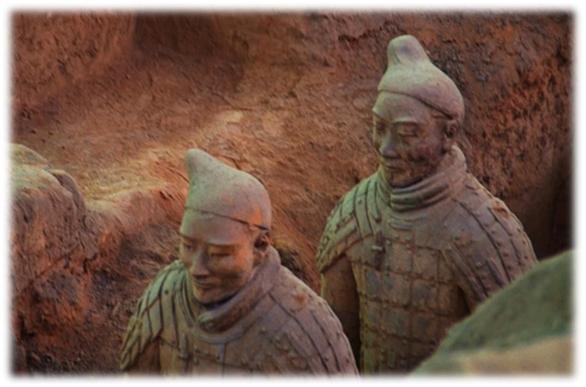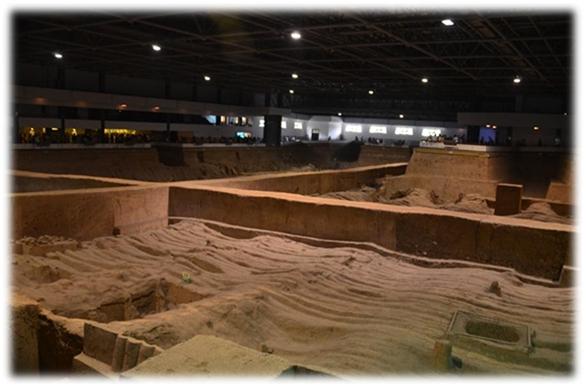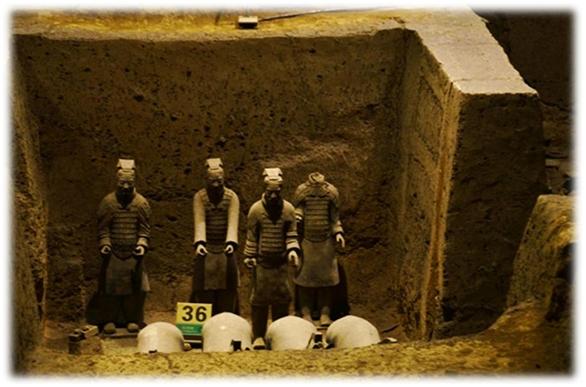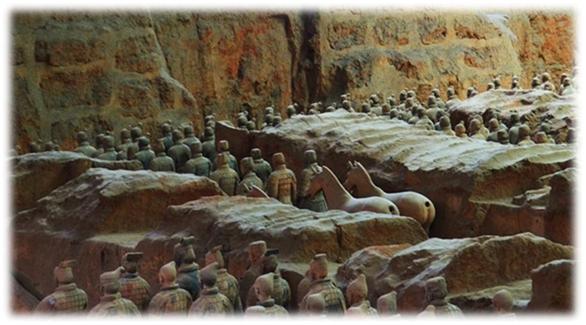Photos: China Part 6 - Xi'an > The Ancient City and The Terra Cotta Warriors

Xian and the Terra Cotta Warriors We have arrived in Xian (She Ann) to visit another famous city in China. We took the overnight train (soft sleeper berths) from Beijing. Very nice; they ask you what time in the morning you would like to be served your coffee or tea. Xi'an was, for centuries, the center of China's power with many emporer's ruling from here….within the confines of this ancient walled city. Our hotel was right beside the Bell Tower in the heart of the city, for once we didn’t mind being in the centre of things as we were here for the warriors, but, what do you do with your time after you have visited this most impressive site. There was lots going on all of the time, I thought you might enjoy the day to evening shots of our home away from home. I must mention that we arrived at the time of one of China's biggest National Holidays…the Dragon Boat Races, a three day holiday for most of the citizens….save a few to serve tourists...more people, but the sun was shining. In our hotel, there were tables set out with beautiful boxes that people were buying, we asked what was in them and they told us various filled dumplings, the guests of the hotel took them to the races-we think or maybe ate them on the way. They seemed to be expensive; they started at a small box for RMB60 and climbed to well over RMB500….that would be $10 to $100. The packaging was all important!!.....as is the case in many things in China.
The proverbial triangle – hotel, shopping centre and city attraction, something for everyone!
It is quite interesting to see how we dress in comparison to the Chinese tourist, the men wear long trousers all the time; and for the women, very, very, short skirts or shorts. We always seem to have a t-shirt from our latest tourist attraction, if John turned around you would read "I climbed the Great Wall of China".
Lucky Koi in the lobby I am always taken aback at how different buildings, streets, etc look during the day compared to evening, when cities put on their jewels, they truly shine at night.
This little guy caught our attention as he was wearing a toddler one piece suit we had never seen before. We started to notice this type of outfit after this and realized that the mom’s rather than having to buy expensive diapers, just have them crouch pretty much anywhere and take care of business. We did notice that they took the toddlers into a bathroom when one was available.
I guess we should start our tour with the factory, they really did make nice things, we just couldn’t fit a life-size terra cotta warrior on the boat.
Our first warrior-he is missing his headdress.
Forget the terra cotta; I would have liked the jade lion, this is the factory we visited before going to see what we came to Xian for.
They kept on trying to sell us one of the full size warriors and we tried to explain one more time we were living on a boat and they wouldn’t fit, they replied that they could mail a full size warrior to Canada, yes, you could but we don’t have a home in Canada, well we can mail the warrior to your boat in Malaysia...and on it went, they really try hard to sell you, coming up with every option so you can buy something from their shop. History The discovery of Emperor Qin’s terra cotta army happened in 1974 when some local farmers were drilling a series of wells for water for their village. They discovered pottery fragments and ancient bronze weapons, took them to the local authorities and the rest, as they say, is history. The Chinese government built a museum over the burial sites to preserve and protect them. We were surprised: I think we should do more homework in advance to be more ready for these impressive discoveries-I guess you only see photos of the army not the buildings that house them, if you just visited the buildings you would have no idea what they contained, just look like another museum.
Here we are with one of the farmers who discovered the army. Our guide and the locals call him “the lucky farmer”. John was able to negotiate a very good deal that included a photo and signed book. We like to collect the books of each of the cities and attractions we are visiting. We talked to this gentleman, and he is very much enjoying meeting people through his signed books and photo ops. Our first view of the army.
Emperor Qin was born in 259BC and died in 210BC, he created an army to be buried with him and we are looking at part of his army from 210BC. He organized the first centralized feudal empire. We have to remember that China was divided into many small feudal countries, each one with their own emperor or general. They were Qi, Chu, Yan, Han, Zhao, Wei, and as we look at these names you start to recognize the names of Emperors and their ruling dynasty. He changed the way things worked in China by abolishing the feudal system and divided the country into 36 prefectures which were further broken down into counties and townships and appointed twelve ministers to help him make decisions on state affairs. You have to remember that he was way ahead of the times; he standardized the system of coinage, weights and measurements and handwriting. He also connected the Great Wall from Liao Dong to Lin Yao to help keep invaders out. All this being said, he also had a negative side, he was avaricious (extremely greedy) and a dictatorial despot, which, after reading about some of the emperors, makes sense. He was very cruel to the peasants and scholars as well as anyone who did not agree with him …and could suffer ten kinds of execution. Emperor Qin died and left his son in charge who was very weak and loved his luxuries, which of course led to the demise of the Qin Dynasty. Emperor Qin’s mausoleum was to be a tribute to him so on his thirteenth birthday he started the constructions of many mausoleums at the foot of Mount Li. The construction of the mausoleums took 38 years and when he died his tomb was filled with models of palaces, pavilions, gems, and rare artifacts. He also ensured that his cruelty to the lower masses continued, ladies without children, tomb builders and anyone else involved with the building of his mausoleum were buried alive with him along with his terra cotta army. This is very similar to the Egyptians and other countries who believed that many lives must be sacrificed for the entombment of a royal. He did create one of the most impressive armies to be buried with him.
It is amazing how every face/head is unique!
Many are missing hands, some feet, others heads, this will take years to replace the missing limbs, and they still have to uncover so many more soldiers, horses and chariots.
It looks the horses are nudging them.
Here we are standing in front of the army, cool.
Awaiting excavation.
Many of the archers were destroyed; luckily they have a few under glass. This warrior is the ONLY intact clay model found to date in the pits.
These guys just need to attach the leather straps to the horses and they can be on their way.
Say the word and they are ready to defend their Emperor. We left the army to go back to our hotel for our next adventure, the Shaanxi Grand Opera House Xi’an China, the music and dance performed during Tang Dynasty. |
